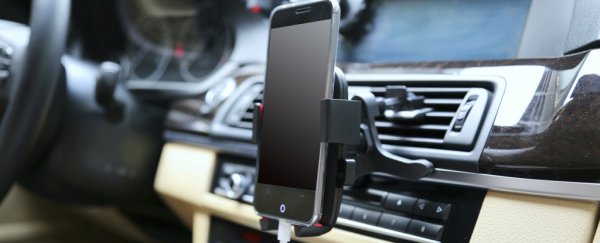Although many of us think we're doing the right thing by chatting using hands-free while in the car – a recent study shows you might be just as distracted as if you didn't bother.
In fact, the study shows that those using either a hand-held or hands-free device had a 40 percent longer response time than those not using a phone at all.
"In real terms this equates to a delayed response distance of about 11 metres for a vehicle travelling at 40km/h," said Shimul Haque from Queensland University of Technology (QUT).
Haque investigated how drivers fared using the CARRS-Q Advanced Driving Simulator when a pedestrian entered the drivers peripheral vision from the footpath.
"We then monitored the driver's performance and reaction times during hands-free and hand-held phone conversations and without," said Haque.
"The reaction time of drivers participating in either a hand-held or hands-free conversation was more than 40 percent longer than those not using a phone."
This came out to 1 extra second than those with phones – equating to around 11 metres for a car travelling at 1 kilometre an hour.
"This shows hands-free and hand-held phone conversations while driving have similar detrimental effects in responding to a very common peripheral event of a pedestrian entering a crossing from the footpath," Haque said.
Although 1 second doesn't sound like a long time, it could easily be the difference between breaking successfully, and causing an accident.
The researchers also found that inexperienced drivers are twice as impaired by talking on the phone – an issue when young people are also more likely to drive tired.
"The human brain compensates for receiving increased information from a mobile phone conversation by not sending some visual information to the working memory," Haque said.
"[That leads] to a tendency to 'look at' but not 'see' objects by distracted drivers."
So until we can all finally use driverless cars to get us from A to B Haque says it's probably best to limit calls on the road – plus we all need to ensure there are appropriate laws in place.
"These findings highlight a need to consider mobile [cell] phone use laws in response to interventions to reduce rear-end crashes," he added.
These results definitely give us a glimpse at how easily drivers can get distracted.
The researchers presented their findings at a recent Driving Distraction Seminar at QUT and has been published in Accident Analysis & Prevention.
Queensland University of Technology is a sponsor of ScienceAlert. Find out more about their research.
